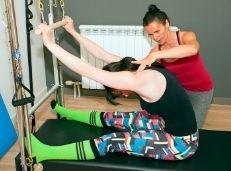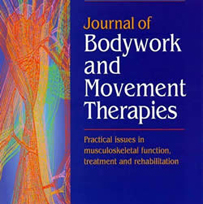
Is Pilates an effective rehabilitation tool?
A systematic review (2018) by Keira Byrnes, Ping-Jung Wu, Stephney Whillier
Department of Chiropractic, Faculty of Science and Engineering, Macquarie University, Australia
Link to original JBMT article:
https://www.bodyworkmovementtherapies.com/article/S1360-8592(17)30095-5/abstract
The results of the majority of the studies (19 out of the 23) indicated that Pilates was beneficial in improving outcome measures such as pain and disability compared to the control or comparator group. These improvements were shown to be either statistically or clinically significant, or both.
Of the remaining four papers, three had equivocal results compared to the comparator, and one paper was unclear in its results.
Low back pain
Ten papers out of a total of fourteen found that the Pilates group performed better than the control or comparator group in their outcome measures by the end of the study. Two of the most common outcome measures used were pain and disability.
Two papers compared mat to equipment Pilates rather than to a control, and both found a statistically significant improvement in the outcomes for both at the end of the trial and thus concluded that Pilates itself was beneficial. The two did however differ, in that one found the equipment Pilates more beneficial in the reduction of pain while the other found the opposite to be true, with the mat Pilates group showing a greater decrease in disability, and improvement in movement outcomes such as balance.
Three papers found Pilates no better than the comparator. They used
- generic physiotherapy exercises, including stationary cycling, trunk and lower limb stretching, spine mobilisation and trunk muscle strengthening;
- generic global exercises including stationary cycling, leg stretches, upper body weights, Theraband, Swiss ball and nonspecific, multidirectional floor exercises.
- mat exercises for lumbar stabilisation as directed by athletic trainers, exercise physiologists and a physical therapists.
Multiple sclerosis
Two studies found significant improvement with Pilates compared to physical therapy
Postmenopausal osteoporosis
Two studies showed a statistically significant improvement in pain and quality of life in the Pilates group compared to the control or comparator group.
One of these studies showed that thoracic extension exercises may be almost as effective as Pilates.
Non-structural scoliosis
The one paper showed improvement in Cobb angle, trunk flexion and pain, compared to the control group.
Hypertension
The one study found that the Pilates group showed significant improvement in all outcome measures compared to the control. The authors also reported a clinically significant decrease in blood pressure.
Chronic neck pain
The one study found a clinically and statistically significant improvement in the Pilates group in pain, disability and quality of life. They found that the comparator group of home exercise also improved in all outcome measures, but to a lesser extent than the Pilates group.
Note: The above is entirely directly quoted from the study, selectively edited by Robyn Rix, PAA Research subcommittee, for easy of reading.

Member Benefit: PAA Full Membership includes Subscription to the JBMT
Have you signed up for your free subscription to the Journal of Bodywork and Movement Therapy yet?
Full members with an active PAA membership have a subscription to the JBMT included with membership (lists are updated quarterly).
How to Access the JBMT
The first time you log in to the JBMT online you must claim your subscription. Thereafter you will be able to login anytime, providing your membership remains current.
Follow this link for instructions on how to access your complimentary subscription to the Journal: JBMT registration instructions

Comments are closed.